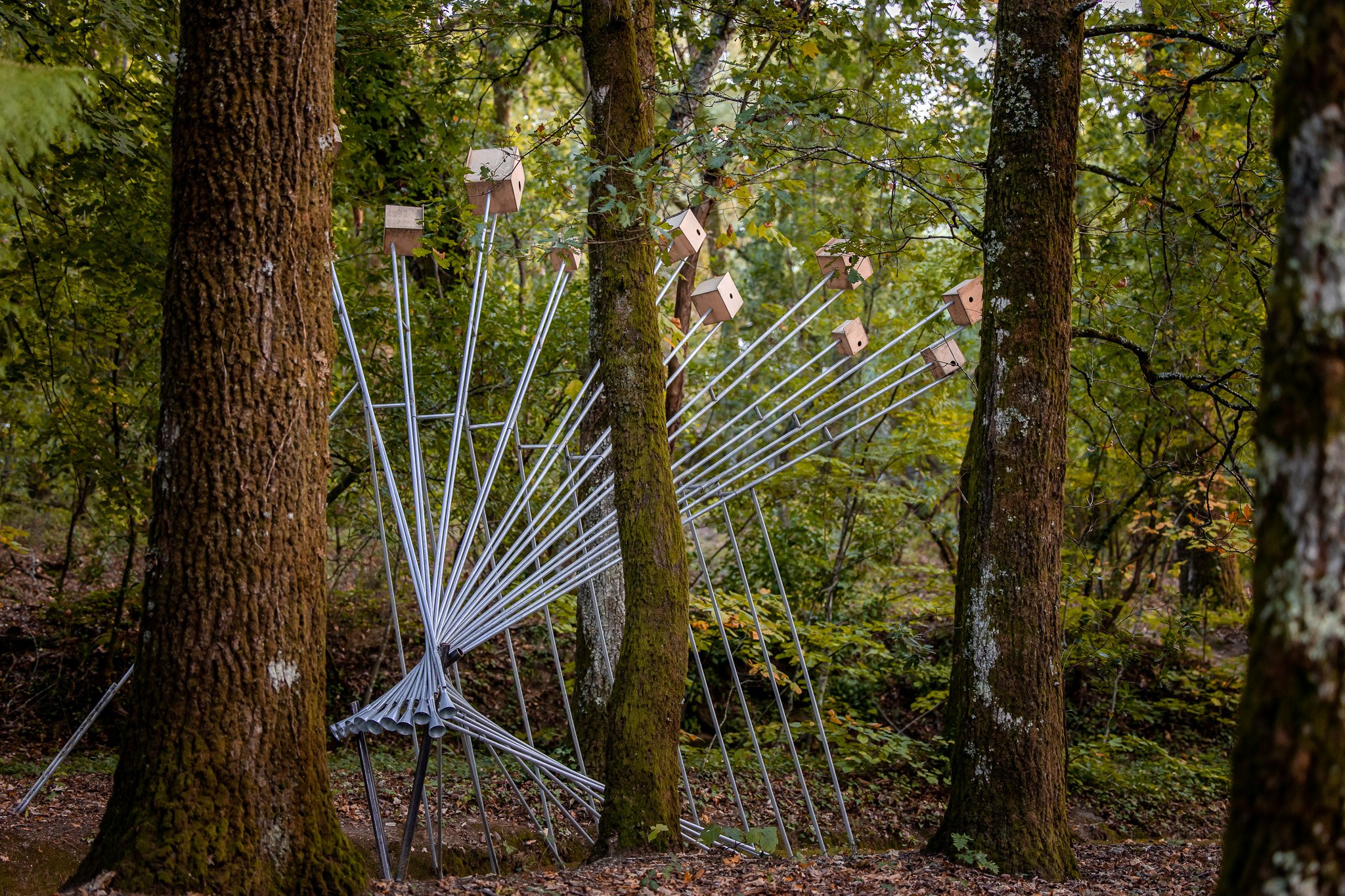
Little Choir in the Wild by LFZ Studio
Installation June 15 2025
Intro
When we walk through a forest, is it just the shade beneath the canopy that catches our eye?
Of course not.
We catch the flickers of movement between the branches, we listen to the melodies carried through the leaves, and we begin to sense another kind of life—birds—inhabiting this living landscape. They are the native voices of this green community, singing wild choruses that invite us to Viseu, Portugal, to feel and listen to nature. LFZ Studio captured this melody and created Little Choirs in the Wild, a spatial installation where birds and humans can share space and thrive together.
In 2021, after receiving an invitation from the Poldra Festival, Linfeng Zhou, the founder of LFZ Studio, approached the forest with the mindset of an architect and created Little Choir in the Wild, a piece that blurs the boundary between function and beauty. Using an interdisciplinary method, he transformed a quiet corner of the woods into a space for unique exchanges between humans and nature.
Little Choir in the Wild
Interpretation
Though Little Choir in the Wild boldly exposes stiff steel pipes which are often seen as symbols of industrial progress, it stands out in how it brings both the visual delight of a peacock’s fanned tail and a meaningful presence within the site’s living ecology. LFZ Studio carefully studied the bird species native to Viseu, using this research to guide the size and placement of the birdhouses positioned at the ends of each pipe.
The work speaks to both humans and birds, not by dividing them, but by building an invisible bridge that links their worlds and allows sound to pass between them. The iron pipes gently collect the birds’ calls as they perch and rest, weaving soft layers of choral sound that meet the ear and linger where sight cannot reach.
Linfeng Zhou shared another detail from the design process that adds a thoughtful touch. João Dias, the artist who helped develop the project, introduced him to the fruit pickers used by local farmers in the region. These tools, with their conical shape, closely resembled the metal amplifiers Zhou had first imagined. He chose to replace his original design with these prefabricated cones, strengthening the cultural connection to Viseu and heightening the tension between the industrial world and nature.
When birds perch on these branches of steel and plywood, singing, resting, and nesting, the sculpture no longer feels like a human claim over nature. It becomes the artist’s thoughtful gesture, shaped by care and reflection, that poses a respectful question to the countless forms of life who do not speak our language:
As we enjoy the hunger of consuming industry, the thrill of endless construction, the freedom of unrestrained imagination, what can I offer to you, and to all of you?
From the Artist
“Located within a forest renowned for its resident peacocks, the work pays homage to their magnificent feathers. This peacock-inspired structure not only serves as a tribute but also ensures that the birdhouses are strategically spaced apart.
Situated in a historic park on the city’s outskirts, this installation acts as an unique interface between the avian world and human admirers. Irregular choral concerts take place here, delivering the harmonies of these soaring creatures to human ears.”

Outro
The forest never answers in words. But Little Choirs in the Wild listens—capturing wind, wings, and song, as the most honest reply.
Credits
By
More works on
Interpretation by
Layout by











